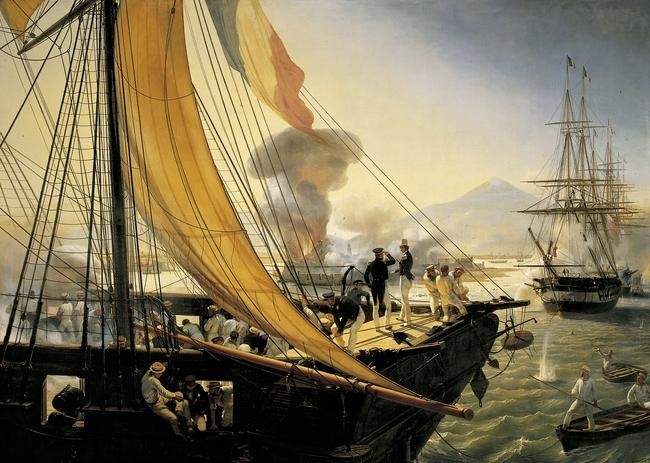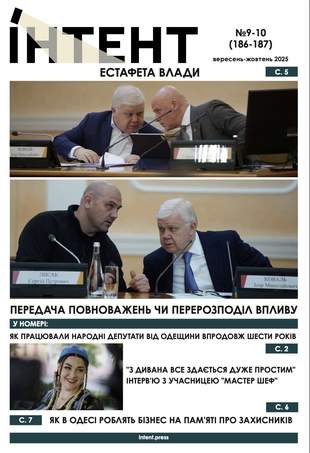Меню
Social networks
Sections
Dec. 9, 2024, 9:42 p.m.
Confectionery war: a story about sweets and guns
Цей матеріал також доступний українською167

Hood. Emile-Jean-Oras Vernet. Image: homsk.com
In order to start an international conflict, a state needs to find and voice a pretext. Sometimes the pretext for starting a conflict borders on necessity, while at other times it is a stretch because the state wants to attack. In the so-called Confectionery War, the name itself suggests that there was no need for the conflict. Let's try to figure out what makes the conflict interesting and what circumstances actually led to its outbreak.
How independent Mexico was hardened
France is coming to solve the problem
How the independent Mexico was being hardened
At the beginning of the nineteenth century, Spain owned vast territories on the American continent. However, the Napoleonic wars and the conquest of Spain significantly undermined its authority and power. The result was the struggle for freedom of the Spanish colonies, which gained independence one by one.

The possessions of Spain and other colonial empires in 1800. Map: Wikipedia
Mexico was next in line in 1821. The country proclaimed imperial rule, which was replaced by a republic in a coup in 1823. In total, in the 20 years since independence, the government in Mexico has changed about 20 times. Regular coups and internal confrontations have drained the country economically, leading to a gradual increase in external debt. At the same time, the turbulent state of Mexico attracted the attention of European colonial empires, as before independence, the territory was an important supplier of precious metals to Spain.
Another systemic problem within Mexico was the looting and destruction of property, which regularly occurred during civil strife. In particular, in 1828, immediately after the presidential election, supporters of candidates Manuel Gomez Pedraza and Vicente Guerrero Saldanha continued to fight in the streets. During these riots, property not only of native Mexicans but also of immigrants from European countries was damaged. The victims appealed to the Mexican authorities for compensation, but their requests were ignored.
In 1835, the Mexican state of Texas launched a war of independence, which resulted in the formation of the Republic of Texas the following year. In the middle of the next decade, the Republic of Texas became part of the United States. This was not the last territorial loss of the young North American country.
France lays claim
Commercial relations between France and Mexico existed as early as the 1820s. In particular, France was an active creditor to Mexico. After diplomatic relations were established, France became Mexico's third largest trading partner after the United States and Britain. However, problems gradually began to accumulate between the countries.
First, despite the active mutually beneficial trade between France and Mexico, French goods were subject to the highest taxes compared to their competitors. Secondly, internal conflicts in Mexico continued one after another, and France gradually began to suspect that its loans would never be repaid. Third, the execution in 1837 of a French citizen accused by Mexico of piracy did not improve relations. Fourth, in the 1830s, the French government began to receive appeals from Frenchmen in Mexico whose property had been damaged as a result of internal confrontations.
Among the victims was the confectioner Remontel, who claimed that Mexican soldiers had robbed his shop. The confectioner estimated his losses at 60 thousand pesos. Remontel's name went down in history because it was thanks to him that the Confectionery War was called.
There is a legend that King Louis Philippe of France accidentally came across Remontel's request for help and the king allegedly burst into righteous anger. In reality, everything was probably much more prosaic. One way or another, French Prime Minister Louis-Mathieu Molyneux demanded that Mexico pay 600,000 pesos for the damage caused to the property of French citizens.
Obviously, the cup of French patience has run dry. From the point of view of pragmatism, France chose a rather convenient moment to issue an ultimatum. Mexico had recently lost the state of Texas, revealing its weakness. Moreover, internal confrontations continued. However, Mexico refused to pay. To maintain its authority, France had to take decisive action.
France goes to solve the problem
At the end of 1837, France sent a squadron of one frigate and three brigs to the Mexican coast. The French squadron freely organized the blockade of the key Mexican port of Veracruz, as Mexico did not have a powerful enough navy. Until April 1838, negotiations between the parties were ongoing, but they did not yield any results.
It was time for military action, but the French fleet was not powerful enough to attack the Mexican coast. So France sent a new, much more powerful squadron to Mexico under the command of Rear Admiral Charles Baudin. The squadron consisted of four frigates, which were to be supported by brigs, corvettes, bombers, and two steamers to ensure the flotilla's maneuverability. The squadron was armed with 380 guns, including heavy mortars and the new Peking guns of the time.

The Peking gun. Photo: Photo.
The main goal of the squadron was the port of Veracruz. However, to reach the port, they had to first overcome the resistance of the San Juan de Ulua fort. The fort was located on an island about a kilometer from the port and covered the approaches to it.

Fort San Juan de Ulua still protects Veracruz in the twenty-first century. Photo: Wikipedia
On November 26, 1838, French ships lined up in combat formation to begin shelling the fort the next day. The Mexicans tried to respond. One of the shots from the fort's cannons even broke a plate in Prince François de Juanville's cabin. In response, the prince took off his hat and saluted the Mexicans.

Positions of French ships on the plan of attack of San Juan de Ulua. Scheme: Wikipedia
At first, two powder stores exploded, and later the same thing happened to the signal tower. Gradually, the Mexican fire began to subside. In the evening, they asked for a temporary truce. At that time, 220 soldiers had already been killed in the fortress and almost all the ammunition had been used up. One of the fort's upper batteries was completely destroyed, and most of the outer defenses were demolished. In the morning, the French and the fort's defenders signed an agreement. European troops were taking control of the fort. Bodin allowed thousands of Mexican soldiers to stay in Veracruz, especially since the French did not have enough personnel to occupy the port anyway. French losses amounted to four killed and 29 wounded.
The Battle of Veracruz
The Mexican government declared war on France and wanted revenge. For this purpose, 3,200 soldiers were allocated, to be led by Generals Mariano Arista and Antonio Lopez de Santa Anna. The latter had repeatedly led Mexico during his lifetime, but after the loss of Texas he was in disgrace. The Mexican army quickly entered Veracruz, which came as a surprise to Charles Baudin, who, after capturing the fort, hoped to resume negotiations. The fighting was obviously destined to continue.
Although the French were short of men, they planned to capture both Mexican generals with a surprise attack on Veracruz. One and a half thousand Frenchmen landed on the coast of Veracruz and marched on the city in three groups. Interestingly, one of the groups was led personally by Prince François de Juanville. Rear Admiral Bodin also landed on the Mexican coast. The French managed to capture the firing points of the enemy, who did not have time to fire a single shot. The Mexican soldiers began to put up real resistance when the French were already storming Arista and Santa Anna's homes. Arista was captured, and Santa Anna managed to escape.

The French capture General Arista's residence in Veracruz. The picture: homsk.com
Having done the job, the French began to retreat to the coast with the captured general. As the French were leaving the coast, the Mexicans, led by Santa Anna, suddenly launched a counterattack. The French opened fire with captured cannons and light guns from boats. Buckshot firing caused serious damage to the Mexicans. Santa Anna himself lost a horse and was seriously wounded. The French lost 8 killed and 56 wounded. According to Santa Anna, the Mexican losses amounted to 31 killed and 26 wounded. Later it turned out that Santa Anna's ankle, shattered by a buckshot, required amputation of part of her leg. The general ordered his lost limb to be buried with full military honors.
Mexico tried to resist France for several more months, but the blockade of Veracruz was causing serious damage to the country. With British mediation, a peace treaty was signed, under which Mexico agreed to give France 600,000 pesos in installments. In fact, this amount was added to the significant debt of the Mexicans. After the treaty was signed, French troops returned to Europe.
Conclusions.
France successfully chose the right moment to make claims against Mexico and subsequently attack the country's territory. At that time, internal confrontations continued in Mexico, and the country had recently lost Texas. The reason for the conflict also seemed reasonable in the eyes of the international community, as France had accumulated many claims against Mexico over the past ten years. The amount of moral compensation demanded by France looked obviously overstated, but it was also perceived by the international community with understanding, given Mexico's debt. France was supposedly just getting back what it was owed. There was an unwritten rule in international relations: the debtor should be more accommodating in its relations with the creditor.
Mexico's problems continued to deepen after the defeat. The 600 thousand pesos were an additional burden on the country. Since Veracruz, as a key port, was of strategic importance to the country's economy, the long period of its blockade caused significant losses. In addition, Mexico had to allocate additional funds to repair the damage in Veracruz. Economic problems led to new domestic political complications and another change of government. Antonio López de Santa Anna became the country's leader again. He took full advantage of the image of a hero who lost a leg in the battle for the country.
Mexico would have to suffer a lot more in the future. In the 1840s, several centers of separatism would appear in the country. Eventually, the war with the United States would lead to the loss of more than half of the country's territory. In the 1860s, European countries would intervene in Mexico, and later the French would form a new empire under their control. All this can be considered a consequence of internal conflicts that tore the country apart for several decades.
The Battle of San Juan de Ulua was an important milestone in military history. It is considered to be the first time a strong fort was defeated solely due to an attack from the sea. The success of the attack was due to a number of factors: the use of new effective Peking guns, mortars, and steamers that helped traditional ships maneuver during the battle.











